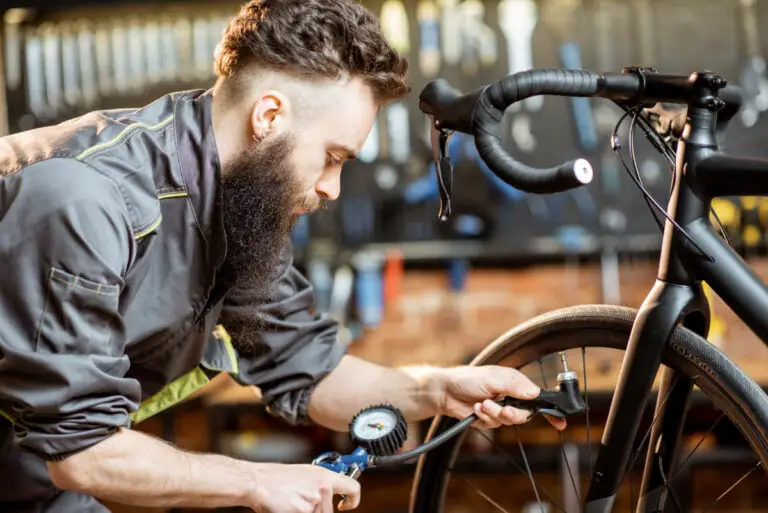What Are Clincher Tires? Features & Benefits
Clincher tires are a type of bike tire that uses a separate inner tube and is attached to the rim of the wheel with a hook-shaped bead. Because the bead of the tire “clinches” onto the rim of the wheel to secure the tire in place, they are known as “clincher” tires.
The most popular kind of bicycle tire, clincher tires are used on a variety of bicycles, including road bikes, mountain bikes, hybrid bikes, and more. The basic characteristics and advantages of clincher tires will be examined in this article, along with some advice on how to select and care for clincher tires.
Features of Clincher Tires
The characteristics of clincher tires distinguish them from other kinds of bicycle tires. These qualities consist of:
- Inner tube: To keep the air within the tire, clincher tires need an independent inner tube. Before the tire is attached to the wheel rim, the inner tube, which is made of rubber or butyl, is placed into the tire.
- Bead: To keep the tire in place, the tire’s bead “clinches” onto the rim of the wheel. While other tire types, including tubeless tires, have a more rounded bead and don’t need an inner tube, clincher tires have a hook-shaped bead that fits into the rim of the wheel.
- Tread: The portion of the tire that makes contact with the ground and offers traction is called the tread. To accommodate various riding circumstances, including smooth roads, rugged trails, rainy or dry conditions, and more, clincher tires come in a range of tread patterns and compounds.
Benefits of Clincher Tires
Clincher tires are a common option for bike riders due to their many advantages. These consist of::
- Wide availability: Clincher tires, the most popular kind of bike tire, are widely accessible and come in a variety of sizes, brands, and styles to accommodate various riding requirements. Because of this, it is simple to locate clincher tires that are appropriate for your bike and riding style.
- Easy to install: When compared to other tire types, clincher tires are comparatively simple to install. The procedure is putting the inner tube inside the tire, securing it to the wheel’s rim, and pumping up the inner tube to the appropriate pressure.
- Easy to repair: Changing the inner tube is typically all that is required to fix a flat tire on a clincher tire. Comparatively speaking, this is far easier than attempting to fix or replace a tire with a more specialized model, like a tubeless tire.
- Good traction: Depending on the tread pattern and tire compound, clincher tires can provide good traction on a variety of terrain. This makes them appropriate for a variety of riding circumstances, such as slick roads, challenging trails, wet or dry weather, and more.
- Wide range of tire pressure: Depending on the rider’s preference and the sort of terrain they are riding on, clincher tires can be operated at a wide range of air pressures. Low air pressure, on the other hand, can provide a better grip and a more comfortable ride, while higher air pressure can provide lower rolling resistance and a faster ride.
Choosing Clincher Tires
There are a number of things to take into account while selecting clincher tires for your bike, such as:
- Type of bike: Different bike types may call for different tire kinds. For instance, whereas mountain bikes may need larger, more robust tires, road cycles may need tires that are smaller and lighter. Make sure the tires you select are appropriate for your bike and riding style.
- Size of the tire: The size of the tire is crucial for both a proper fit on your rim and proper tire clearance on your bike. Make sure that the tires you select fit your rim and bike frame properly.
- Quality of the tire: The performance and longevity of a tire can be impacted by its quality. Even though better tires could cost more money, they might perform better and last longer.
- Tread pattern and compound: The traction and efficiency of a tire can be impacted by its tread pattern and compound. Smooth highways, difficult trails, and rainy or dry weather, among other riding scenarios, call for diverse tread patterns and tire formulations.
Maintaining Clincher Tires
Your clincher tires may be kept in top condition and extended their lifespan with proper care. Here are some pointers for caring for clincher tires:
- Check the air pressure regularly: Be sure to check the tire pressure frequently to make sure it is at the proper level. The performance and wear of the tire might be impacted by an air pressure that is either too high or too low.
- Inspect the tires regularly: Regularly check your tires for cuts, punctures, and other problems that may need replacement or repair.
- Replace the inner tube if necessary: If you have a clincher tire and you get a flat, you can usually remedy the issue by changing the inner tube. Use an inner tube that is the appropriate size and kind for your tire.
- Replace the tire if necessary: If your tires are beyond repair due to wear or damage, you may need to replace them. Make sure the tires you select are appropriate for your bike and riding style.
Due to their widespread availability, ease of installation and repair, strong grip, and wide range of tire pressure, clincher tires are a favorite among bike riders.
It’s crucial to take into account the type of bike, the tire’s size, its quality, as well as the tread pattern and compound while selecting clincher tires. Your clincher tires may be kept in top condition and extended their lifespan with proper care.


